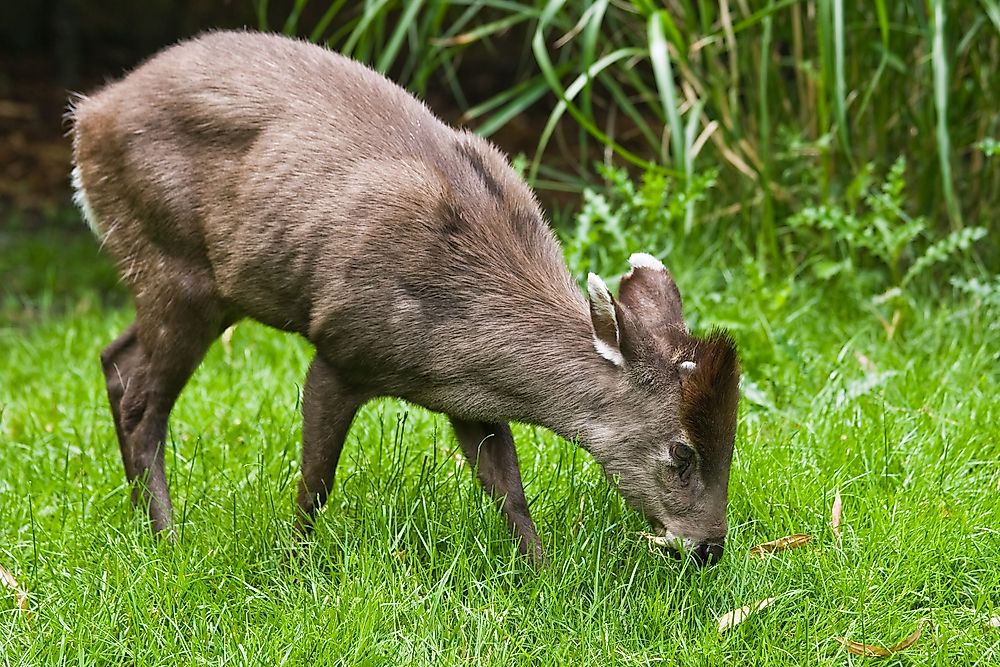Interesting Facts About The Tufted Deer

The tufted deer can simply be described as a small type or species of deer that is mostly recognised by its conspicuous tuft of black hair on its forehead. The tufted deer belongs to the Elaphodus genus, and it is restricted to habitats only up to 4,500 meters above sea level. It is the only living mammal that belongs to genus Elaphodus and has not been studied widely since it lives at high altitudes.There are several interesting and distinguishing facts about the tufted deer as described below.
Habitat
This species exists in mountainous forests of Myanmar and central parts of China. The tufted deer commonly exist at high altitudes and occasionally in rain forests. Moreover, they exist in habitats that are close to water bodies.
Physical Description
The most prominent feature of the tufted deer is its fang-like canines that only exist on the male species and can grow up to 2.6cm. Tufted deer lack the upper incisors and instead they have a hard pad that is used during chewing of vegetation. The tufted deer is characterized by its long neck and legs which distinguish it from the muntjac species. It measures approximately 50-70 centimeters long. Its weight varies from 17 to 30 kilograms. Their tails usually are short measuring about 10 centimeters while the forehead contains black/brown hair that is horseshoe-shaped. The male species are slightly larger than the females physically, giving the reason as to why the male tufted deer protects the pathways that these species pass through.
Food Habits
The tufted deer feed on leaves, twigs, grasses, fruits and other kinds of plants. They are classified as browsers and grazers. Tufted deer press the lower incisors against the upper pad while feeding on the vegetation.
Behavior
The tufted deer are mostly found existing in solitary and sometimes in pairs. In addition, they travel in fixed routes in their habitats, which are always protected by the male deer. Tufted deer is described as a shy animal, and that is why it prefers staying in places that are well covered, where it is well adapted to the surrounding environment so that it is not noticed easily. Since the tufted deer are ordinarily shy during the daytime, they tend to be more active at night. Once this animal is disturbed, it barks out loudly as a sign of warning/alarming the others. It then flees by jumping like a cat. While running, it lifts its tail upwards showing its white underside. The tufted deer often fight for mates and territory, using their sharp canines as their primary weapon.
Reproduction
The tufted deer become sexually active between the age of eighteenth months and two years. They normally at the start of winter and the end of fall, hence giving birth in the early summer. In a year, tufted deer can reproduce once or twice (i.e., one or two fawns are born). The tufted male deer normally bark during the mating season to attract mates.











